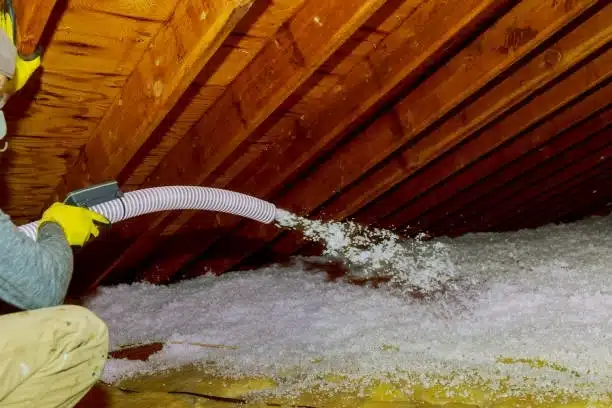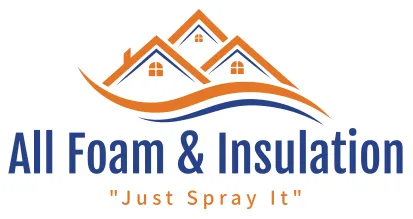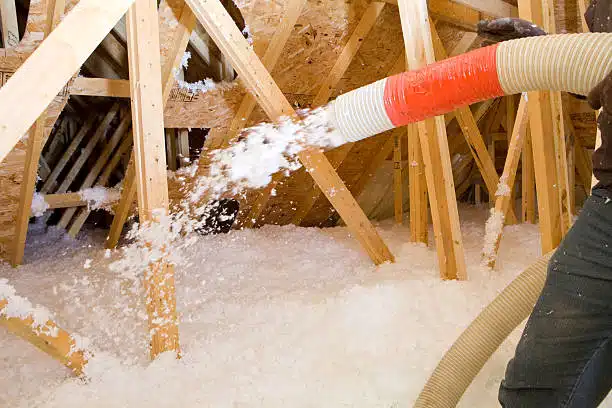Blown-in insulation is an exceptionally durable solution for homes, often lasting for the entire life of the structure when installed correctly. For most Grants Pass properties, this means a lifespan of 80 to 100 years. However, its long-term effectiveness hinges on a few key variables: the specific material used, the quality of the installation, and the environmental conditions within the attic or walls. Factors like moisture, pests, and natural settling can impact its performance over time.
This guide provides a detailed look at what determines the longevity of blown-in insulation solutions. With years of experience insulating homes in Southern Oregon, All Foam & Insulation, LLC offers this information to help property owners understand the value and durability of their investment. You’ll find a clear breakdown of different materials, signs of degradation, and what to consider for our local climate.
Key Factors Influencing Insulation Lifespan
The durability of blown-in insulation in Grants Pass, OR isn’t a simple guarantee; it’s the result of several interacting elements. Understanding these can help you protect your home’s thermal barrier for decades.
Material Type
The most common blown-in materials each have a different expected lifespan and performance profile.
- Fiberglass: Made from fine strands of glass, this material is naturally resistant to moisture and pests. It doesn’t rot or decay and can easily last 80 years or more.
- Cellulose: This material is composed of recycled paper products treated with fire retardants. While effective, it’s more susceptible to moisture absorption. If it becomes saturated, it can compress and lose R-value, potentially requiring replacement after 20 to 30 years if moisture issues aren’t controlled.
- Mineral Wool (Rock Wool): Made from volcanic rock and slag, mineral wool is highly resistant to fire, moisture, and pests. It has a very long lifespan, often exceeding 100 years without degradation.
Installation Quality
Proper installation is just as important as the material itself. An experienced technician ensures the insulation is blown to the correct density and depth, providing complete coverage without gaps. Poor installation can lead to air leaks and voids, which compromise energy efficiency and can allow moisture to accumulate, shortening the material’s effective life.
Moisture and Pests
Moisture is the primary enemy of most insulation types, especially cellulose. Roof leaks, poor attic ventilation, or condensation can cause insulation to become damp, leading to mold, mildew, and compaction. According to the U.S. Environmental Protection Agency, controlling moisture is the key to managing mold growth in a home. Pests like rodents or insects can also tunnel through insulation, creating nests and reducing its thermal performance.
Settling Over Time
All blown-in insulation will settle to some degree. Fiberglass and mineral wool are less prone to significant settling. Cellulose, on the other hand, can settle by as much as 20% over its lifetime. This compaction reduces the insulation’s depth and, consequently, its R-value. Regular inspections can determine if an attic needs a “top-up” to restore its original performance level.
A Quick Comparison of Blown-In Materials
Choosing the right material for your Grants Pass home depends on your budget, performance goals, and specific property needs. This table offers a straightforward comparison.
| Feature | Fiberglass | Cellulose | Mineral Wool |
|---|---|---|---|
| Typical Lifespan | 80+ years | 20-30 years (if wet) | 100+ years |
| R-Value per Inch | 2.2 – 2.7 | 3.2 – 3.8 | 3.0 – 3.3 |
| Moisture Resistance | High | Low | Very High |
| Pest Resistance | High | Moderate (borate treated) | Very High |
| Fire Resistance | High (non-combustible) | Good (treated) | Excellent |
Bonus Tip: For homes near wooded areas in Josephine County, opting for a material with high pest resistance like mineral wool or fiberglass can prevent future infestations and damage to your insulation.
Signs Your Insulation May Need Attention
Even long-lasting insulation can lose its effectiveness. Watch for these common indicators that your home’s thermal barrier might be compromised.
- Rising Energy Bills: An unexplained spike in heating or cooling costs is often the first sign that your insulation is no longer performing as it should.
- Inconsistent Temperatures: If some rooms are noticeably colder or hotter than others, it could point to insulation gaps or settling.
- Drafts: Feeling drafts, especially near outlets or baseboards, can indicate that wall insulation has settled or is missing.
- Visible Damage: Check your attic for any signs of water stains, mold, or pest activity. Also, look to see if the insulation appears compressed, thin, or below the top of your ceiling joists.
A report from the U.S. Department of Energy highlights that proper insulation is one of the most practical ways to make a home more energy-efficient, suggesting that many U.S. homes lack sufficient insulation.

Things to Consider Before Making a Decision
Before you decide to install or upgrade your insulation, think about these factors specific to living in Southern Oregon.
Your Home’s Age and Structure
Older homes in Grants Pass, especially those built before modern energy codes, often have little to no insulation. The structure of your attic, walls, and crawl space will influence which type of blown-in insulation is most suitable.
Local Climate Conditions
Grants Pass experiences hot, dry summers and cool, wet winters. Your insulation needs to be effective at keeping heat out in July and warmth in during January. Good moisture resistance is also a plus for handling winter humidity and preventing condensation issues.
Budget vs. Long-Term Savings
While some materials have a higher upfront cost, they may offer better long-term energy savings and durability. Consider the return on investment. Upgrading attic insulation can often pay for itself in energy savings within a few years.
Attic Ventilation
Proper ventilation is essential for insulation durability. It helps regulate temperature and moisture levels in the attic, protecting both the insulation and the roof structure from damage. Without adequate airflow, heat and moisture can get trapped, leading to premature degradation.
Evaluating Your Home’s Needs
Ultimately, blown-in insulation solutions in Grants Pass, OR is a reliable, long-lasting choice for Grants Pass properties. The key is selecting the right material for your home’s specific conditions and ensuring it’s installed by a qualified professional. By doing so, you can expect decades of consistent thermal performance and energy savings. Before making a final decision, take the time to assess your current insulation levels, check for any moisture or pest issues, and consider your long-term efficiency goals.
Get a Professional Assessment
If you’re unsure about the condition of your insulation or want to explore your options, getting an expert opinion is the next step. For a detailed evaluation and clear answers to your questions, you can contact All Foam & Insulation, LLC. Reach out to the team by calling or sending an email to understand the best solution for your property.
Sources
- U.S. Environmental Protection Agency – Provides official guidance on preventing mold through moisture control, relevant to insulation performance.
- U.S. Department of Energy – Offers comprehensive information on home insulation types, benefits, and energy-saving potential.
- ENERGY STAR – Provides federal guidelines and recommendations for home insulation levels based on geographic climate zones.
Frequently Asked Questions
What is R-value, and why does it matter for Southern Oregon?
R-value measures an insulation material’s ability to resist heat flow. The higher the R-value, the better it insulates. For Grants Pass, which is in Climate Zone 4, recommendations from ENERGY STAR suggest an attic insulation R-value between R-49 and R-60 for optimal energy efficiency throughout our distinct seasons.
How does blown-in insulation handle moisture from Grants Pass winters?
Fiberglass and mineral wool are naturally resistant to moisture and do not support mold growth. While treated cellulose has some moisture resistance, it can absorb water if exposed to a persistent leak, causing it to compress and lose effectiveness. This makes proper attic ventilation and roof maintenance very important in our region.
Can you add new blown-in insulation on top of old insulation?
Yes, in most cases. If the existing insulation is dry and free of mold or pest contamination, new blown-in insulation can be installed directly over it. This is a common practice called “capping” or “topping up” and is a cost-effective way to increase your attic’s total R-value.
Is blown-in insulation a fire hazard?
No. All commercially available blown-in insulation materials are treated to be fire-resistant. Fiberglass and mineral wool are naturally non-combustible. Cellulose is made from paper but is heavily treated with non-toxic fire retardants like borates, making it a safe and effective fire barrier.


